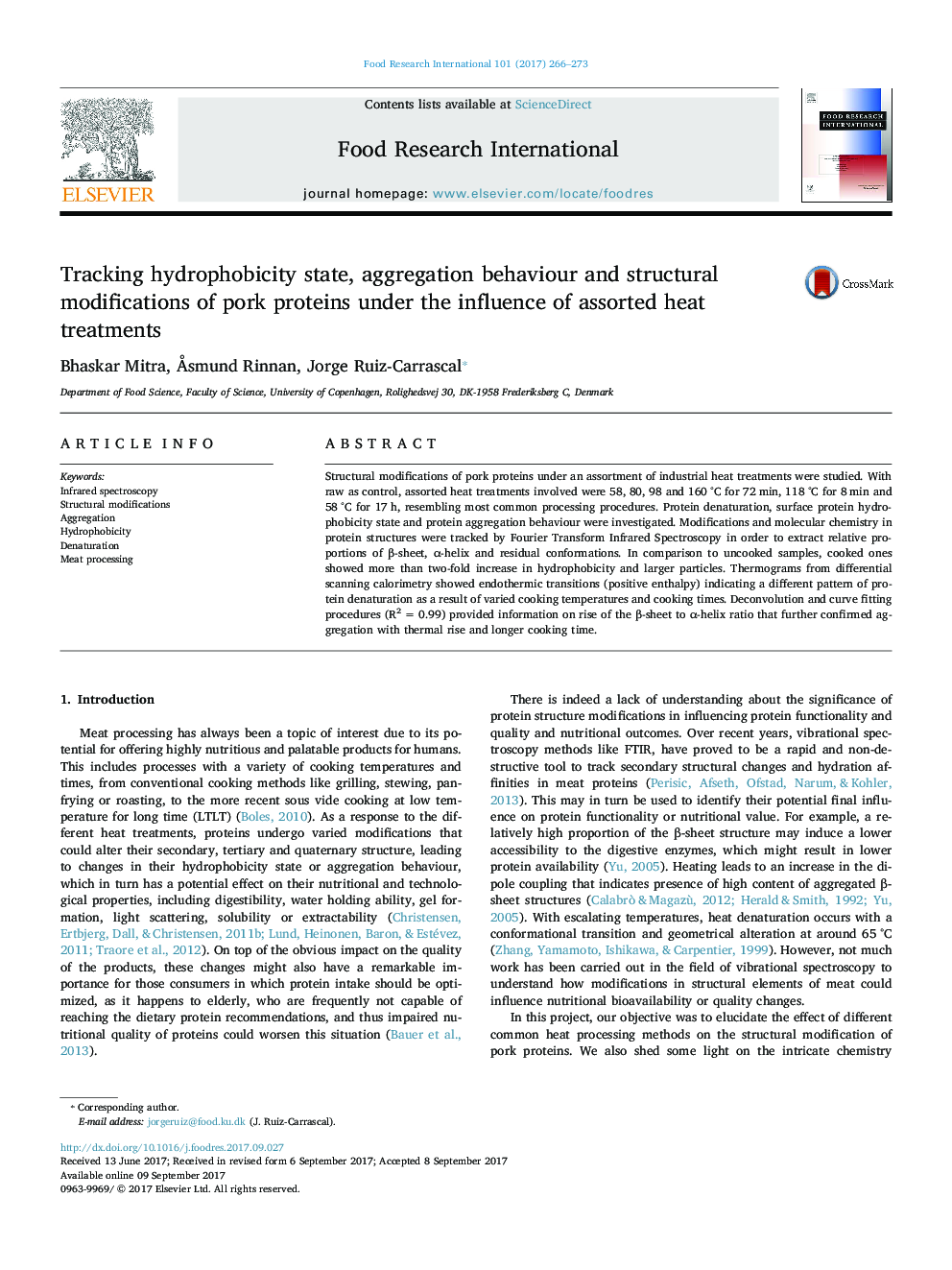| کد مقاله | کد نشریه | سال انتشار | مقاله انگلیسی | نسخه تمام متن |
|---|---|---|---|---|
| 5767816 | 1628450 | 2017 | 8 صفحه PDF | دانلود رایگان |
- Structural modifications of pork proteins under different heat treatments were studied.
- Protein hydrophobicity and denaturation pattern were highly influenced by heating time and temperature.
- Relative proportion of β-sheet to α-helix structures were also clearly affected by heating process.
Structural modifications of pork proteins under an assortment of industrial heat treatments were studied. With raw as control, assorted heat treatments involved were 58, 80, 98 and 160 °C for 72 min, 118 °C for 8 min and 58 °C for 17 h, resembling most common processing procedures. Protein denaturation, surface protein hydrophobicity state and protein aggregation behaviour were investigated. Modifications and molecular chemistry in protein structures were tracked by Fourier Transform Infrared Spectroscopy in order to extract relative proportions of β-sheet, α-helix and residual conformations. In comparison to uncooked samples, cooked ones showed more than two-fold increase in hydrophobicity and larger particles. Thermograms from differential scanning calorimetry showed endothermic transitions (positive enthalpy) indicating a different pattern of protein denaturation as a result of varied cooking temperatures and cooking times. Deconvolution and curve fitting procedures (R2 = 0.99) provided information on rise of the β-sheet to α-helix ratio that further confirmed aggregation with thermal rise and longer cooking time.
154
Journal: Food Research International - Volume 101, November 2017, Pages 266-273
